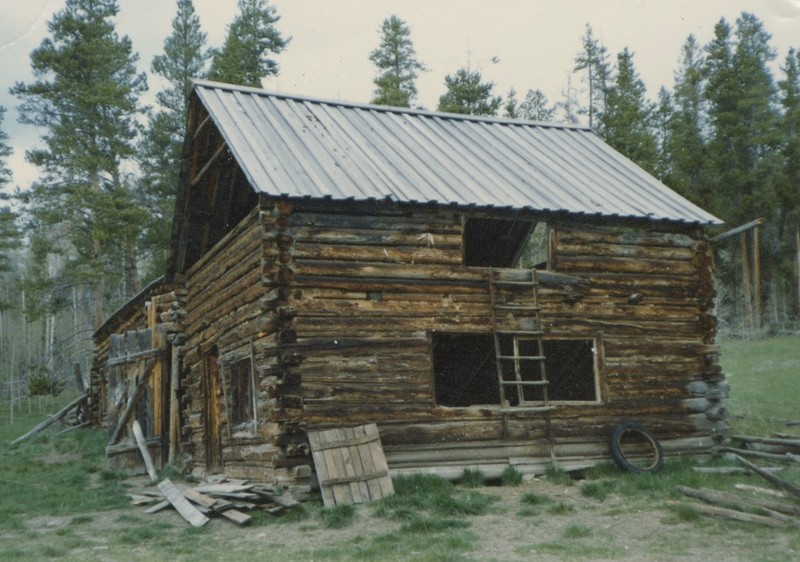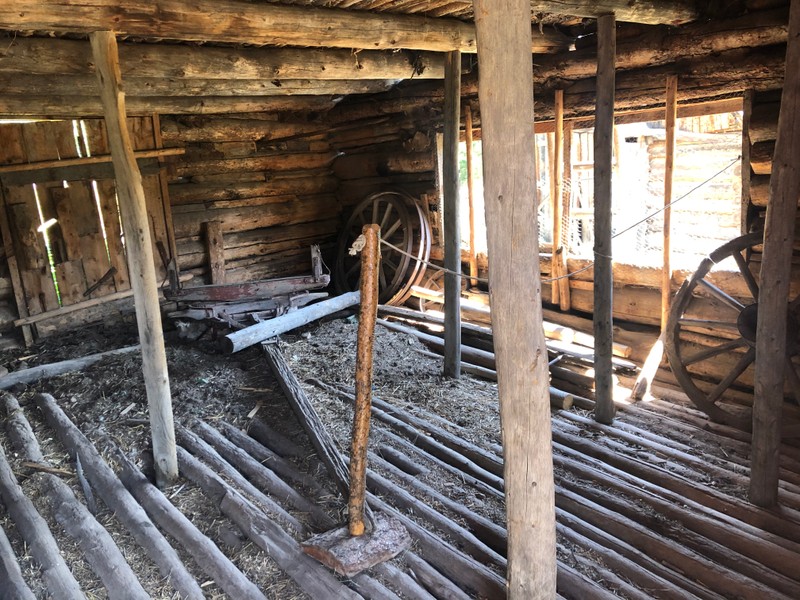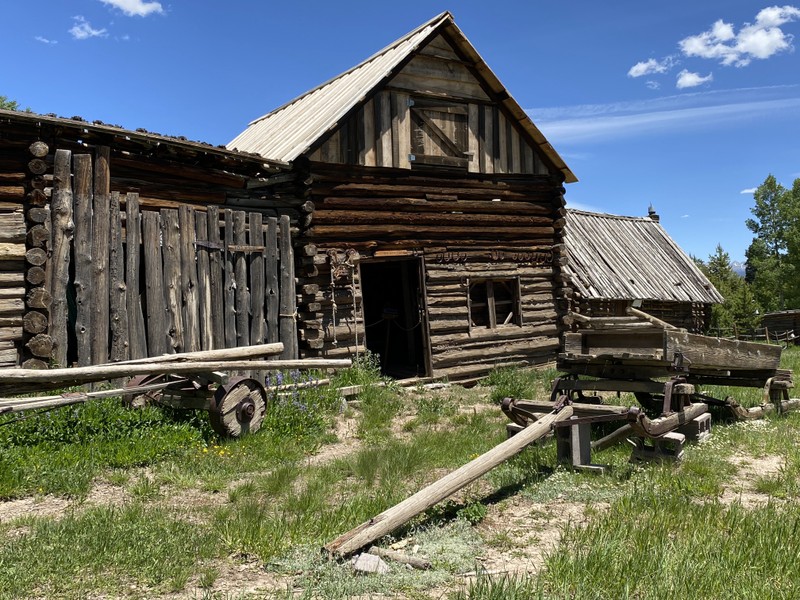Rowley Homestead Horse and Hay Barn
Introduction
Text-to-speech Audio
This barn housed Fred’s horses, with the second story serving as a hay loft. The first and second floors of this barn are different: the coloring on each is unique, as is the construction and the way the logs fit together— the logs on the first story are rectangular while the second story are circular and notched. The floor of the lower story is lined with logs. Fred likely did this to protect his horses from hoof rot during the wintertime. When horses stand in mud, especially freezing mud, for too long, their hooves can get infected which prevents them from being able to work. Horses were an important source of power: they provided the power needed to pull the farm equipment. The outside also features a hay pulley which Fred may have used to move hay from the ground or hay wagon into the loft.
Images
Fred Rowley in front of the horse barn. Note the ladder going up to the hay loft.

The horse and hay barn in the early 2000s.

The interior of the first-floor horse barn. Note the log floor.

The front of the horse and hay barn in 2022.

A sleigh on property. Sleighs were a common form of transportation for homesteaders in the winter and during muddy seasons.

Backstory and Context
Text-to-speech Audio
The first floor and the second floor of this barn were built by two different people. Johnny Childs, another homesteader in the area, built the first floor of the barn as his cabin. Childs passed away and his widow decided to sell their cabin and move back down the mountain. Fred purchased the cabin from her, deconstructed it (like a Lincoln Log set), moved the logs to his own property, put them back together, and replaced the chinking before adding a hayloft on the second floor that he built himself.
Chinking, or the material between the logs, helps not only to keep the logs together, but it insulates the structure too. Most of the buildings at the Rowley Homestead are chinked with a mixture of mud, hay, ash, horse manure, and water. People were also chinking with materials like plaster and concrete, but the material Fred used was free, since all of the ingredients were readily available around the homestead.
Fred had large draft or work horses which he used to pull his haying equipment and as a method of transportation. For most of his life they were Fred’s only way to get to town. He used the sleigh near the barn door during both the snow and mud seasons because the roads were so bad. This is how he brought products into town to sell or travel into town to work on the railroad or at the lumber yards during the winter. Fred likely only had two or three horses, particularly given the small size of his barn. The hay loft was constructed with a hole in the floor where Fred could throw hay down into the manger for his horses.
Sources
Archives of YMCA of the Rockies, Snow Mountain Ranch Collection, Rowley Homestead folders.
Archives of YMCA of the Rockies, Snow Mountain Ranch Collection, Rowley Homestead folders.
Archives of YMCA of the Rockies, Snow Mountain Ranch Collection, Rowley Homestead folders.
